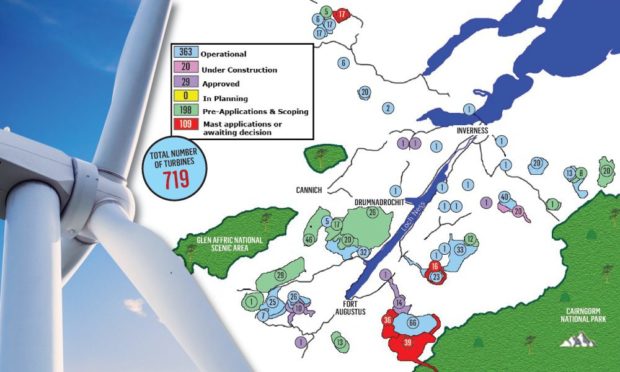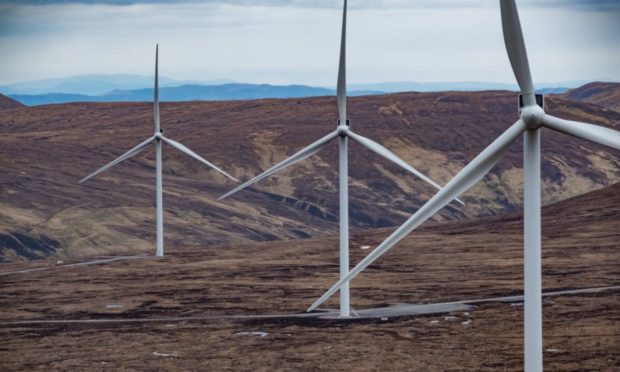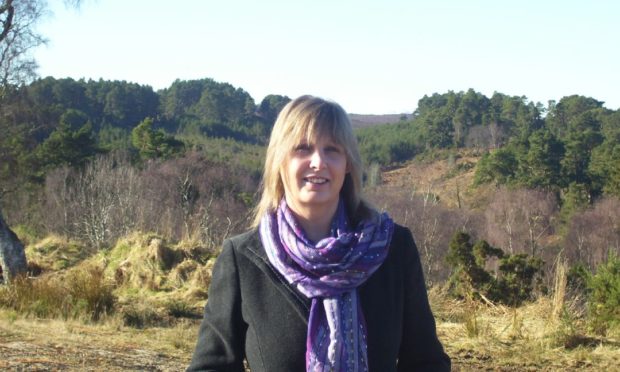Calls have been made to curb wind farm construction around Loch Ness after it was revealed more than 700 turbines may soon surround the popular tourist attraction.
A number of Highland leaders and anti-wind farm campaigners have urged the Scottish Government to “halt the devastation” to nature and local wildlife through a growing number of wind projects around the Great Glen area.
Figures show that 363 operational onshore windfarms have been built in the hillside around the 22-mile loch – with a further 20 under construction and 29 developments awaiting approval.
Another 198 wind developments are currently in pre-application or scoping and 109 awaiting applications or a final decision on whether they can apply to build.
Beauly-based anti-windfarm campaigner Lyndsey Ward said the rampant construction of onshore wind farms was “systematically industrialising hundreds of thousands of acres of Scotland’s beautiful landscape”.
She added: “We simply do not need any more turbines, we can’t afford them – emotionally or economically.
“Rural communities should be left in peace after more than a decade of being targeted.
“I would ask people to look at this map and understand these are primarily wealthy companies from overseas harvesting our heritage with thousands of tonnes of concrete poured into our hillsides.”
Highland council leader Margaret Davidson said windfarm applications required “constant revision” due to the “huge pressure for development” in the region.
But she added that most turbines are “not visible from Loch Ness” and that the council has been “careful to mitigate the cumulative visual impact on visitors and local people”.
Not enough financial benefit
However, Ms Davidson also claimed Highland communities are seeing “nowhere near enough” financial benefit from the large number of windfarms in the region.
She said: “We want to see far more wealth from these projects kept in the Highlands. We need to raise our expectations on this and the Scottish Government need to get behind us.
“Promises have been made by these companies and yet the money seems to be evaporating away from the Highlands.”
Highland MSP Edward Mountain said any plans for new windfarms in the Highlands “should only proceed with the backing of the local communities that are impacted by the developments”.
He added: “In recent years we have seen Scottish Ministers overturn local decisions too often.
“I firmly believe that planning decisions are best dealt with at a local level and that this achieves the most democratic outcome for local communities.”

Government committed to providing clean energy
A spokesman for the Scottish Government said it was “committed to providing clean, green energy from the right developments in the right place” and that it considers “any impacts on local communities” before a consent is made.
He added: “Onshore wind is firmly established as being one of the most cost-effective forms of large-scale electricity generation and is vital to Scotland’s future energy mix as we transition to becoming a net-zero economy.
“Provisional figures indicate that renewables provided the equivalent of 97% of Scotland’s gross electricity consumption in 2020, with onshore wind alone meeting the equivalent of 60% of that consumption.
“However, wind energy developments can, and must, strike the right balance between utilising Scotland’s significant renewable energy resources whilst protecting our finest scenic landscapes and natural heritage.
“That is why assessing the effect on landscape forms a key part of all wind farm applications and why Scotland has some of the most stringent environmental impact regulations anywhere in the world.”

